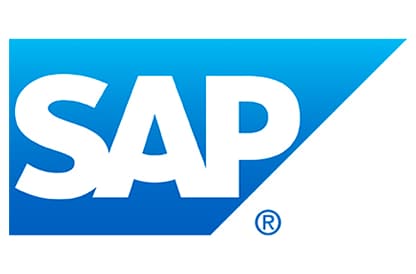Challenges
Time-consuming, manual invoice processing
In an effort to optimize and streamline processes, SRP replaced its aging enterprise resource planning (ERP) and legacy systems with SAP. One of the areas SRP targeted for optimization was its invoice processing operations. Mel Payne, Senior Business Analyst at SRP, explains, “We were having integration challenges with our ERP system. We were on mainframe and we were looking to implement SAP. We had a third-party hosted site for our invoice management system, but it did not integrate. So our technicians had to do a lot of manual keystrokes in order to get the invoice from inception—email, fax, paper mail—all the way through to posting in our financial system.”
The labor-intensive, manual processing of invoices was time consuming and a drain on SRP’s AP resources. “For our technicians, the manual process involved having to babysit the invoice through approvals to making sure it matched the purchase orders (POs). Or in the case of non-POs, they had to make sure it had the proper approvals on it. Every invoice had to then be re-keyed from our third-party vendor or invoice management system into our ERP system. So, 100 percent of our invoices were manually touched by an employee,” says Payne.
SRP sought an automated end-to-end digital solution for all its business requirements, including reduced manual processes, increased workflows, interface capability, and data archiving. “We were looking for something that could maximize our potential and provide integration, efficient invoice management, and automation of manual processes,” says Payne.
Solution
Automated invoice processing, exceptions, and approvals
After considering its options, SRP chose Vendor Invoice Management (VIM) for SAP Solutions, a solution that optimizes and automates the process of receiving, managing, routing, and monitoring invoices and related documentation.
“SRP decided to go with OpenText because it partnered with SAP, which was our choice for the ERP replacement project,” says Payne. “We looked at integration and the ability for users to easily manage invoices and significantly reduce the manual touches, which include automating posting. OpenText VIM was able to accomplish these goals and more.”
The solution also met SRP’s need for a simple, one-stop-shopping experience. “When SRP decided to go with SAP for our ERP replacement project, we had chosen to do a ‘vanilla’ implementation, meaning you can simply open the box, stand it up, use it, and be able to integrate all of our systems into one version of the truth, and that included the OpenText VIM system,” says Payne.
Implementation
With a well-defined strategy and OpenText VIM’s pre-configured solutions, the team quickly had the new system up and running. SRP used an existing solution for scanning invoices from email, fax, and mail to VIM, and customized some components of the VIM solution to fit certain requirements. “After implementation, we were able to process invoices through OpenText VIM on Day One. This was a complete success!” says Payne.
Benefits
The Arizona utility now enjoys the benefits of a centralized system, which automates the movement of invoice data from invoice submission through to vendor payment—namely, cost savings, process efficiencies, and improved quality of service. With OpenText VIM, SRP has been able to increase vendor discounts taken by three percent, decrease the amount of manually posted invoices by more than 90 percent, and reduce the overall cost per invoice by 10 percent.
Increased cost savings
The efficiency and speed of the new automated system has allowed SRP to reduce its cost per invoice. Payne calculated the savings, “We’ve been able to reduce the overall costs per invoice significantly by implementing the OpenText VIM system. We process approximately 150,000 invoices a year. Before, we were operating with a cost per invoice of about $10. We’ve been able to reduce that by one dollar, to nine dollars per invoice.”
Accelerated invoice cycle times
By speeding up invoice cycle times via the new automated system, SRP has reduced the need to pay late fees to vendors for overdue invoices. In fact, the utility has also been able to take increased advantage of vendor discounts for on-time or early payments. “Since we implemented OpenText VIM, we’ve been able to increase our discounts by making more on-time payments through the system. We’ve also been able to reduce our late payments,” says Payne.
Reduced invoice errors
Prior to the new solution, SRP’s AP technicians had to manually key in invoices. This greatly increased the risk of invoice errors, which required time and effort to resolve. With OpenText VIM, such errors are a thing of the past. “In our old system, we were, unfortunately, posting about 90 percent of our invoices manually into the ERP system. With OpenText VIM, we have been able to reduce that number significantly, into the single digits. We also reduced the human errors because there are less manual touches,” notes Payne.
Increased invoice visibility
Gone are the days of wasting valuable time tracking down invoices. The OpenText solution gives the AP team immediate visibility of invoices at any point from the time of receipt to the time of posting. “Since we’ve implemented the OpenText VIM system, we’ve been able to increase our visibility of all of the invoices flowing through the system. We’re able to see where any bottlenecks may be occurring, what departments may need help training, and what issues we may be having with certain vendors. We can then increase the timeliness of being able to post our invoices and pay on time.”
Effective use of resources
Now that time-consuming, manual invoice processing has been eliminated, AP specialists at SRP can focus on more value-added activities. “The AP technician job has evolved since we’ve brought on OpenText VIM. Before, it was a lot of data entry, and now it’s more analytical, meeting with other people in different departments, and resolving issues. And, we’ve been able to reduce the number of AP technicians that we had on staff prior to implementation.
Complete end-to-end digital workflow with OpenText and SAP® Ariba ®
Because all invoices are routed through the OpenText solution, SRP now has a ‘single version of the truth’ when it comes to invoices, which eliminates confusion and inefficiency. “We decided to make OpenText VIM our system of truth for accounts payable, meaning any invoice that comes into our system, whether it be EDI or paper or fax or email, it goes through the OpenText system. Even if something is posted directly into SAP, we pull it back into OpenText. Therefore, we have only one version of truth for our accounts payable system and we find that very useful in the ability to manage our process,” explains Payne. She adds that this approach also includes the new SAP Ariba system, “We’ve been able to bring invoices from Ariba into the OpenText VIM system to then post into SAP.”
Improved vendor relations
Not to be forgotten are the benefits to SRP’s vendors. By optimizing the AP process, SRP has improved the quality of customer service to its vendors. “When AP gets calls from vendors checking up on their invoices or payments, they actually have the information right there. They don’t have several systems to go through. They can tell them or they can hunt down the invoice to where it actually is in the process before answering the vendor. We also have on-boarded SAP Ariba recently and we’ve been seeing an increase of visibility for our vendors,” says Payne.
Conclusion
As a vital part of the community it serves, SRP continues to unlock the potential of its resources and make decisions that best serve its customers. Reflecting on the role of OpenText in that mission, Payne shares her thoughts on the partnership, “We’ve had a lot of good ideas come from them, a lot of support when issues may arise, and we’ve had a very open dialogue. OpenText and SAP are helping SRP grow, increase our efficiencies, leverage our processes, and altogether bring the business forward. It has been a great working experience.






 Salt River Project
Salt River Project 


